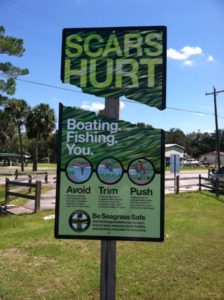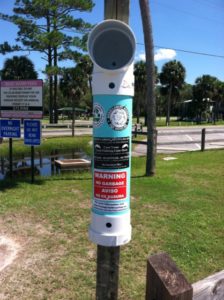Two More Reasons Natural North Florida’s Big Bend Coastline is Pristine
There are two reasons that the Big Bend’s Gulf waters are so well-preserved, both thanks to the folks at the University of Florida’s Nature Coast Biological Station and the area’s friend and Sea Grant Agent, Dr. Savanna Barry.
In recent months, Dr. Barry realized two of her goals that are of importance to anglers and visitors in our area. One, receptacles for recycling used fishing line at boat ramps and access points. The other, signage informing visitors and residents of the importance of our vast sea grass beds. Discarded fishing line is a danger to birds, marine reptiles and even mammals. And our seagrass beds are not only home to bait for sport fish species and scallops, but they also filter water, making ours some of the cleanest and clearest in the state. Here’s how the Florida Department of Environmental Protection describes our Aquatic Preserve:
The Big Bend Seagrasses Aquatic Preserve consists mainly of a large, undeveloped expanse of submerged seagrasses and nearshore marshlands located along 150 miles of the northeast coast of the Gulf of Mexico where the Florida peninsula joins the panhandle. The aquatic preserve boundary encompasses all tidal lands, islands, seagrass beds, shallow banks, and submerged bottoms from the mean high water line extending 9 miles into the Gulf of Mexico. Landward, it includes all natural waterways tidally connected to the preserve to the extent of state jurisdiction or US 98.”



